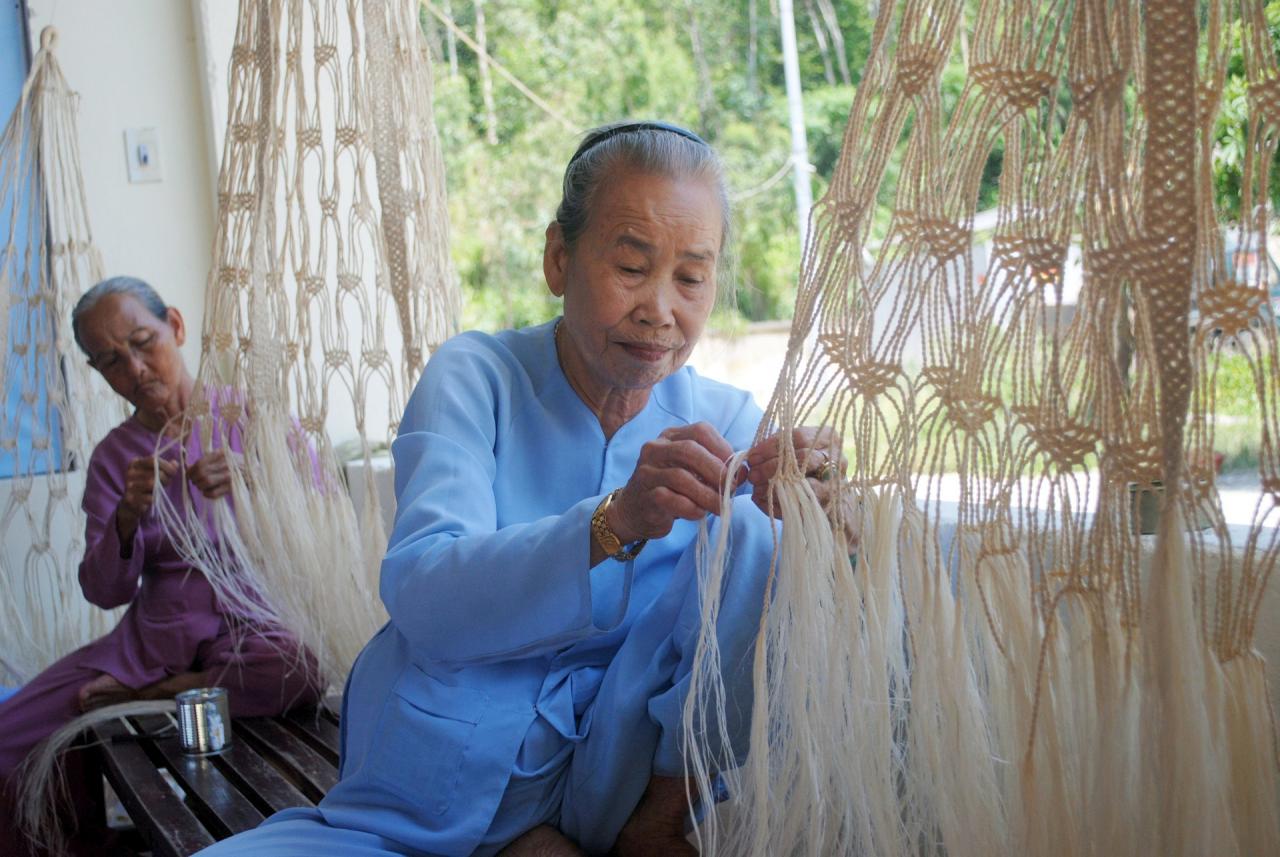
From household products
During the process of living and adapting to the island environment, Cu Lao Cham residents have accumulated a lot of experience and folk knowledge in daily life. More than 100 years ago, in the condition that industrial household products were not yet popular, especially for Cu Lao Cham - an island located far from the mainland, the people here had to be self-sufficient in many aspects. Being hard-working and having talented hands, the residents here knew how to take advantage of available materials to create many valuable handicrafts, imbued with artistic values to serve daily life.
Quite early, local residents knew that the fibers taken from the bark of the red parasol tree that grows abundantly on Cu Lao Cham Island have the characteristics of being very tough, durable, soft, shiny like silk and strong, so they are used to make traditional hand-woven and braided items for use as household items.
People have known how to process the bark of the tung tree into fibers to tie/tie objects and to tie bird nests for export. In particular, the fibers used to weave hammocks are quite durable and popular, from which the tung tree hammock product has become popular locally.
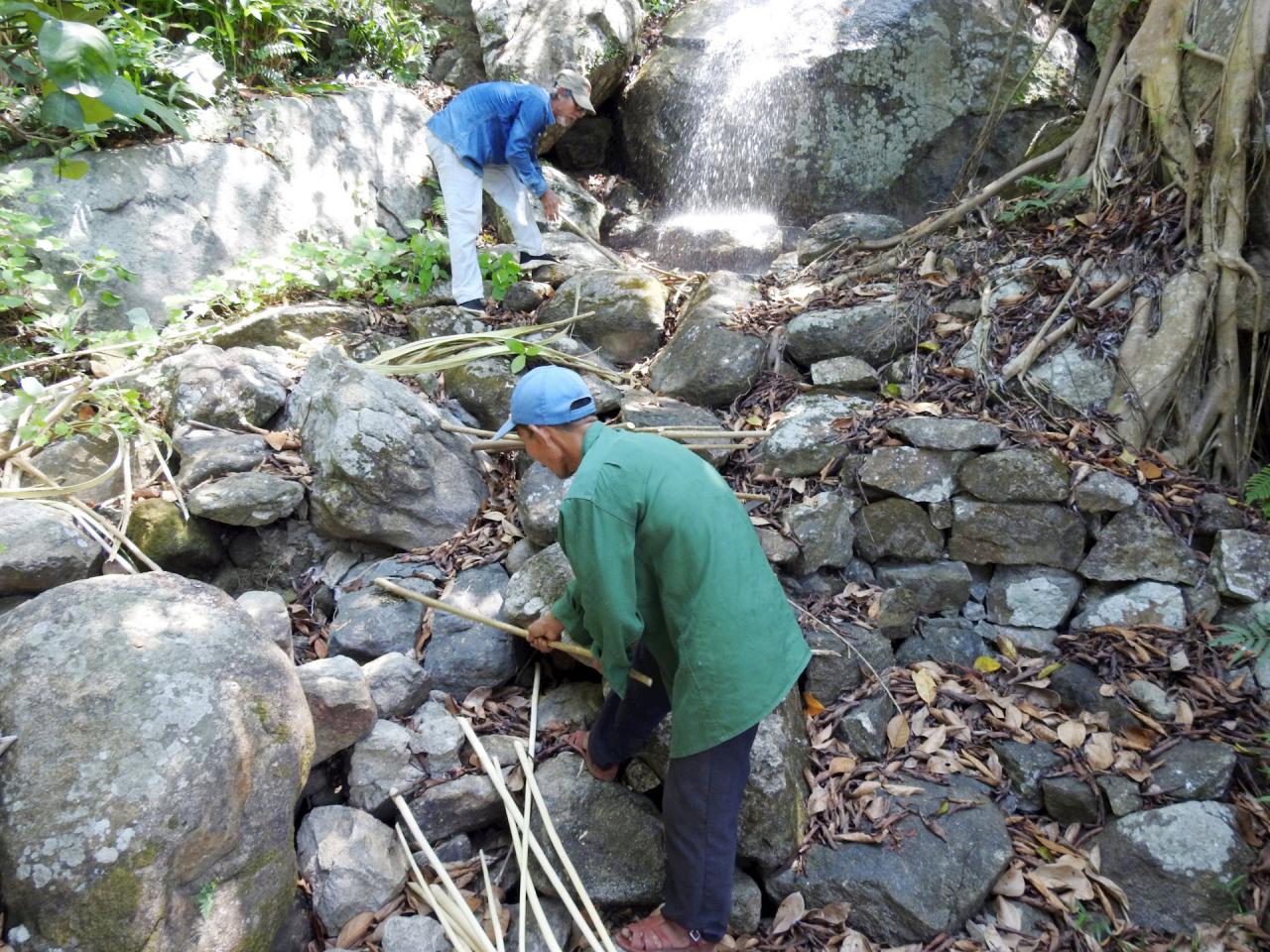
Most of the women living in Cu Lao Cham know how to weave hammocks. The girls are taught how to weave by their mothers and grandmothers from an early age. They take advantage of their free time to weave hammocks. At this time, the residents of Cu Lao Cham only weave hammocks for home use.
Forming a profession associated with island residents
According to local elders, weaving parasol hammocks is a traditional craft of the islanders, since their grandparents knew how to use parasol tree bark to weave hammocks. However, up to now, there is no document to determine the time of formation and development of parasol hammocks weaving in Cu Lao Cham. In the work Nguyen Tuan Complete Works (works from 1940 - 1945), writer Nguyen Tuan used "parasol hammocks" as the title of his essay.
Later, this product was purchased and used by some local residents, especially fishermen from the mainland. Over time, the demand for the product increased, and local people had the opportunity to develop the craft of weaving hammocks from parasol trees.
Through the process of existence and development, this traditional craft sometimes seemed to be lost, due to the appearance and increasing popularity of industrial hammocks on the market. However, to preserve the experiences, techniques, and indigenous knowledge in practicing this traditional craft, local people have tried for generations to preserve and pass on to their descendants the hammock weaving profession typical of the island.
In particular, since being recognized by UNESCO as a World Biosphere Reserve in 2009, tourism in Cu Lao Cham has begun to develop, the craft of weaving parasol hammocks has also become more widely known to domestic and foreign tourists and is recognized for its unique products.
The cotton hammock is one of the typical products in Cu Lao Cham, made from the red cotton tree (Firmiana Colorata R. Br), also known as forest bo, trom mau - a type of woody plant with dark green leaves, bright red flowers in the summer, growing abundantly on the steep cliffs of the island.
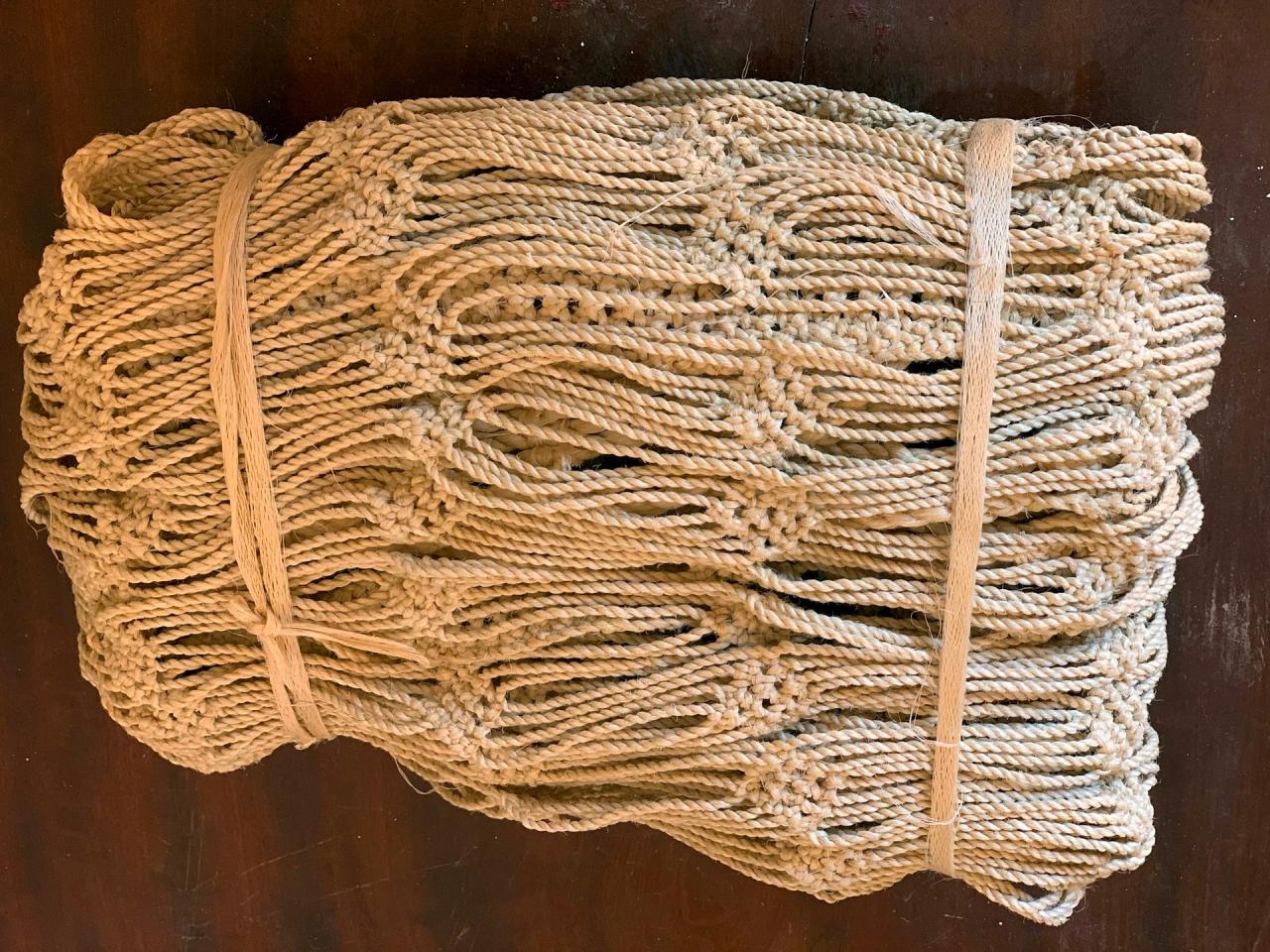
The hammock is woven from very strong mahogany strings and has many hammock eyes. Depending on the size of the hammock, people divide it into 3 types: three-string hammock, four-string hammock and six-string hammock. Three-string hammock consists of 3 tao ropes (each hammock eye has 3 ropes and is called tao rope), four-string hammock consists of 4 tao ropes and six-string hammock consists of 6 tao ropes.
Parasol hammocks are quite durable, if properly preserved, the hammock's lifespan is from 15 to 20 years.
The special thing about lying on a hammock made entirely of natural fibers is that it has the effect of massaging the body's acupuncture points and absorbing sweat, so it is very good for people with leprosy, rheumatism...
Unlike nylon hammocks, the parasol hammocks are cool in summer and warm in winter. These characteristics contribute to the unique value of the parasol hammocks in Cu Lao Cham, Hoi An.
To make a hammock, it goes through many complicated stages, completely by hand. First, the weaver chooses a straight parasol tree, the trunk is about the size of a wrist or smaller, then cuts it down, beats it to get the bark, soaks it in spring water to rot the hard bark, then takes the opaque white fiber layer (also called copper fiber) inside, washes it, and dries it in the sun for about a day. When the fiber is dry and turns pure white, shiny, it is ready to be stripped, spun, and woven into a hammock. It takes 1.5 - 2 months to complete a hammock.
Weaving a hammock made of parasol trees is a very hard job, requiring the craftsman to be patient, meticulous, skillful and have technique in all stages. The process of weaving a hammock begins with the steps of stripping the copper, tying the top of the hammock, making the legs, weaving the body of the hammock, making the cover and tying the hammock.
When weaving, the end of the tung fiber becomes thinner, the craftsman must both braid and add tung fiber. With meticulous, skillful hands and with the experience and knowledge accumulated throughout the process of practicing the profession, the hammock weaving artisans in Cu Lao Cham have a very sophisticated way of attaching tung fiber, very smooth, at first glance it is difficult to detect the joints. After attaching the fibers, they are spun tightly so that the joints are not visible, ensuring both aesthetics and durability, firmness and no slipping.
And so, during the weaving process, when the tung fibers run out, the craftsman adds more, but absolutely no joints come loose, the tung fibers are very smooth and beautiful. When weaving, the hands must always be stretched to weave so that the tung fibers are strong, straight and not twisted. Only then will the tung hammock not sag and achieve softness, ensuring that the hammock is even, strong and tight.
Each fiber of the parasol tree is woven and twisted by the hands of mothers and sisters to create a parasol hammock with harmonious and delicate patterns. The parasol tree fibers become soft, creating a comfortable and pleasant feeling for the user.
Currently, the number of people who know how to weave cotton hammocks in the community of Tan Hiep island commune is not much, mainly the elderly. Currently, in the commune, there are 7 people practicing cotton hammocks weaving, concentrated in Bai Lang and Bai Ong villages. The average age is high, over 50 years old, 4 people are over 85 years old. Among them, the person with the longest experience in the profession is 54 years, the person with the least experience is 7, 8 years.
A typical island product, an honored heritage
For many centuries, the craft of weaving hammocks from parasol trees still exists and develops in the sea of Cu Lao Cham island.
Not only having a purely material value, the parasol hammock is also closely associated with the formation and development of the land, in which, it is attached to, and contains the thoughts and feelings of the islanders. This is a traditional craft with many stages and complex techniques but imbued with folk and artisanal characteristics, creating a typical local handicraft product. This is a profession that not only contributes to generating income for those who practice the profession but also contributes to creating a typical tourism product, associated with the culture of Cu Lao Cham island.
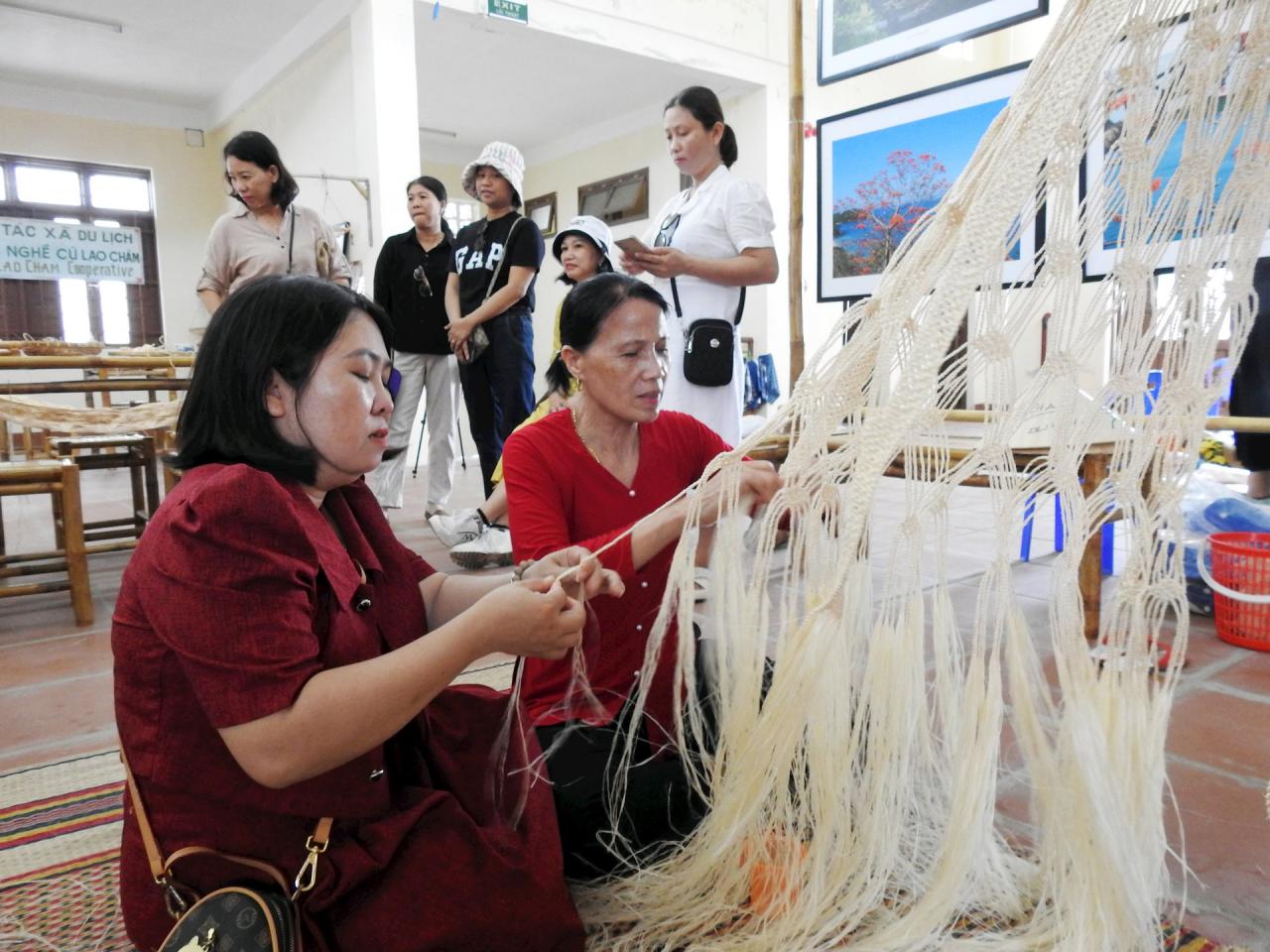
The hammock weaving craft of Cu Lao Cham residents is a form of folk culture, containing a lot of information, so through the products of the craft, we can understand the lifestyle of the local community here. From that, it shows that, since ancient times, Cu Lao Cham residents have known how to use available materials in the forest to serve the living needs on this island.
Therefore, the craft of weaving hammocks from parasol trees has contributed to demonstrating the early access and exploitation of forest resources, in order to adapt to the island terrain of the local community.
From the unique values of the craft of weaving parasol hammocks, associated with the long history and culture of many generations of residents in Cu Lao Cham, the traditional craft of weaving parasol hammocks in Cu Lao Cham, Hoi An has been listed in the List of National Intangible Cultural Heritage according to Decision No. 381/QD-BVHTTDL, dated February 21, 2024 of the Ministry of Culture - Sports and Tourism.
This is an honor for the people of Hoi An, Quang Nam, and at the same time is one of the bases to preserve, maintain and promote traditional crafts, typical of the sea and islands in Cu Lao Cham, Hoi An.
Source: https://baoquangnam.vn/nghe-dan-vong-ngo-dong-o-cu-lao-cham-tu-vat-dung-thuong-ngay-cho-den-di-san-phi-vat-the-quoc-gia-3138099.html




![[Photo] "Beauties" participate in the parade rehearsal at Bien Hoa airport](https://vstatic.vietnam.vn/vietnam/resource/IMAGE/2025/4/11/155502af3384431e918de0e2e585d13a)





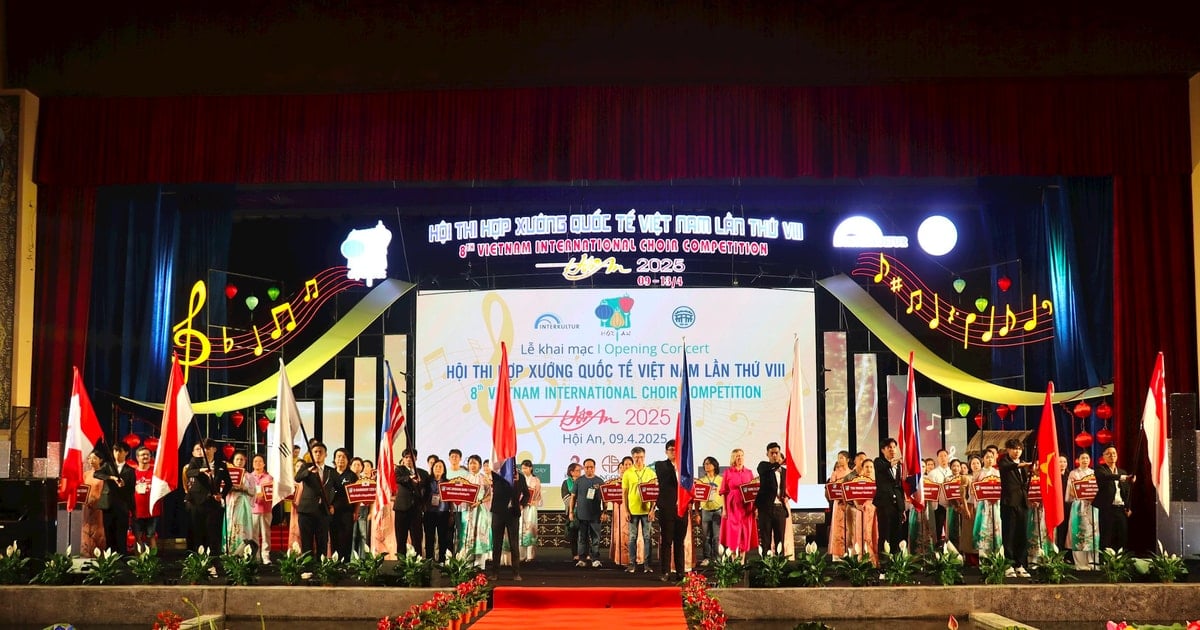

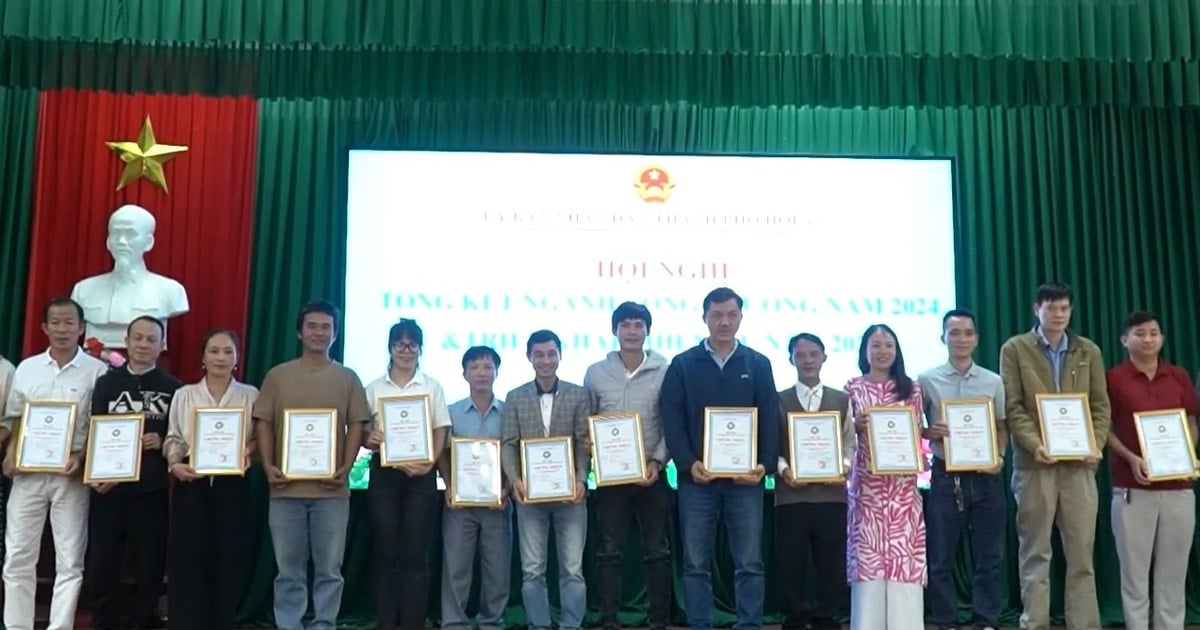
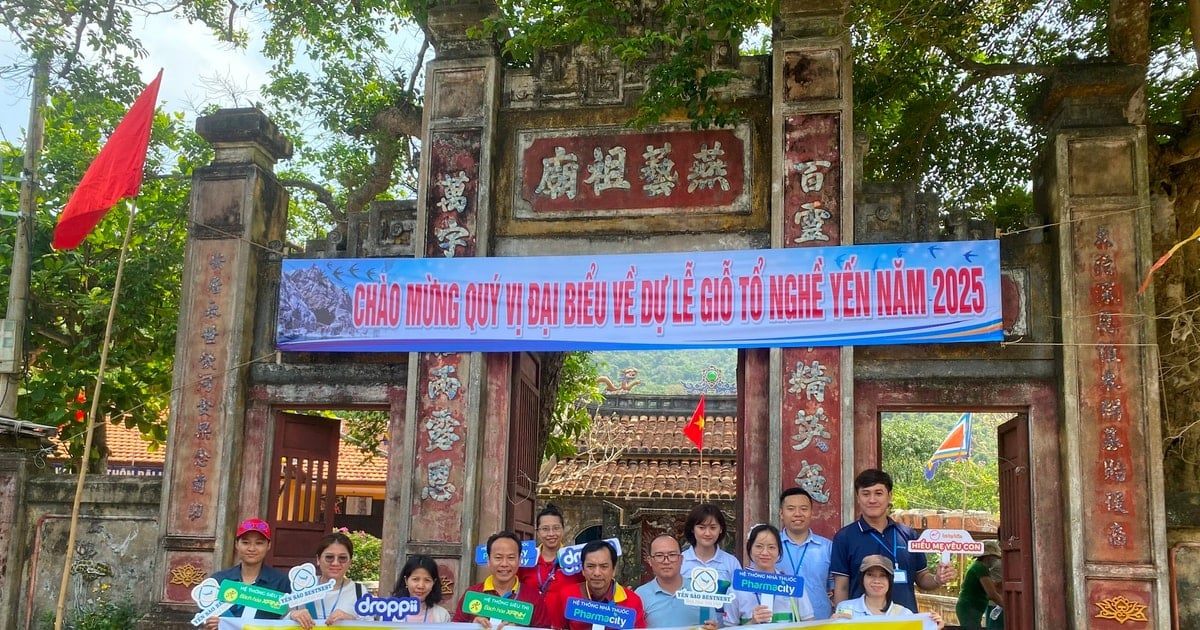




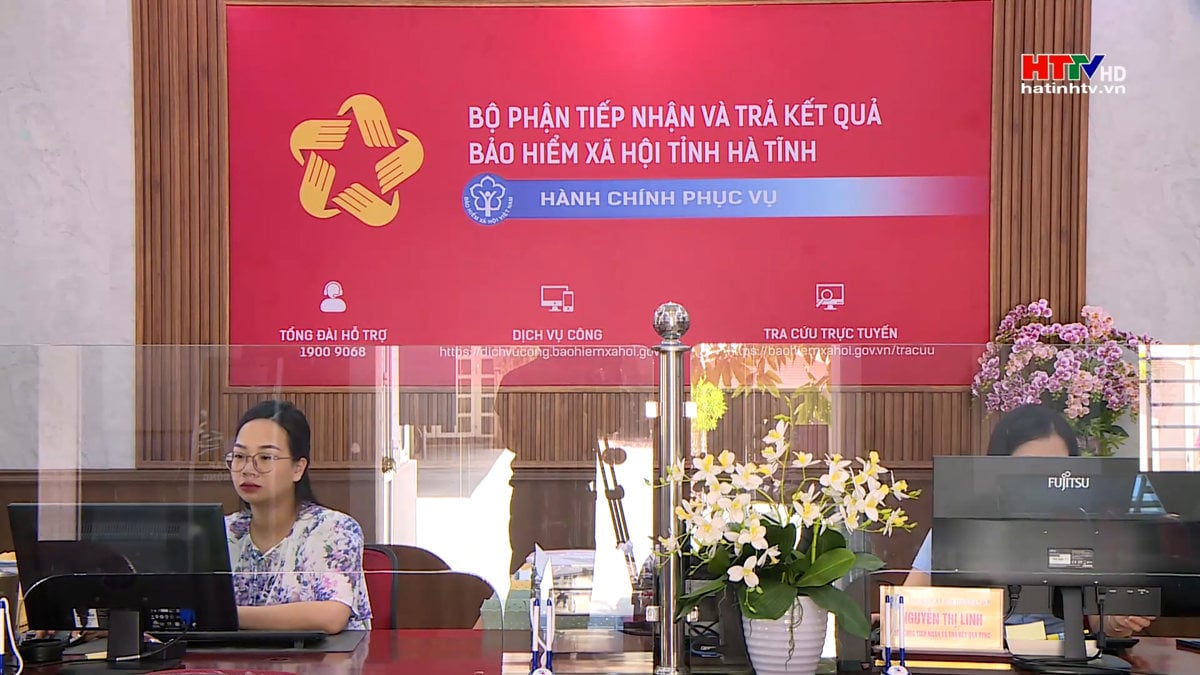
![[VIDEO] - Tam Ky in the season of white trumpet flowers through sketches](https://vstatic.vietnam.vn/vietnam/resource/IMAGE/2025/4/12/6364ee7bf6ef49269d215280697e1f12)

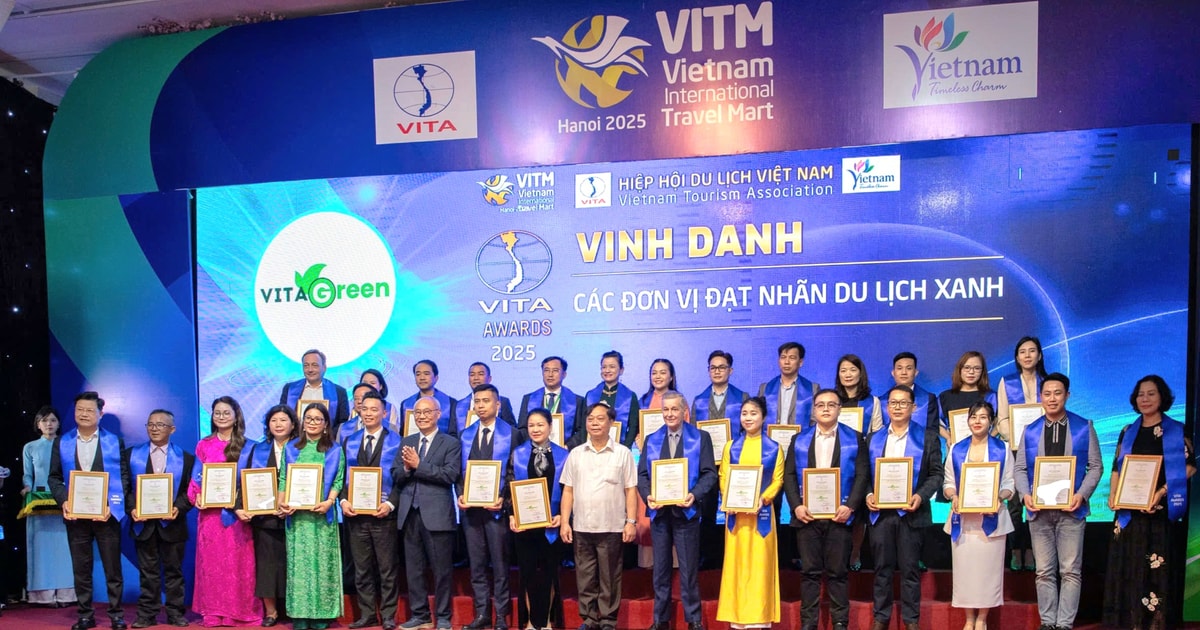
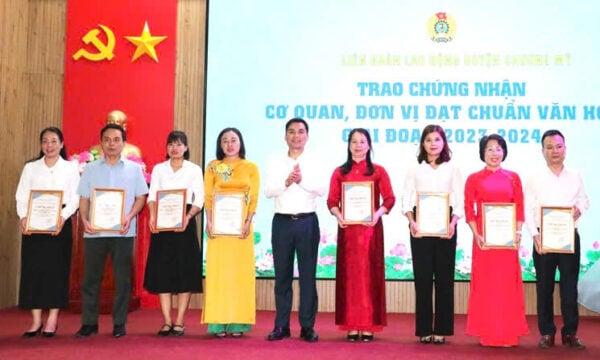


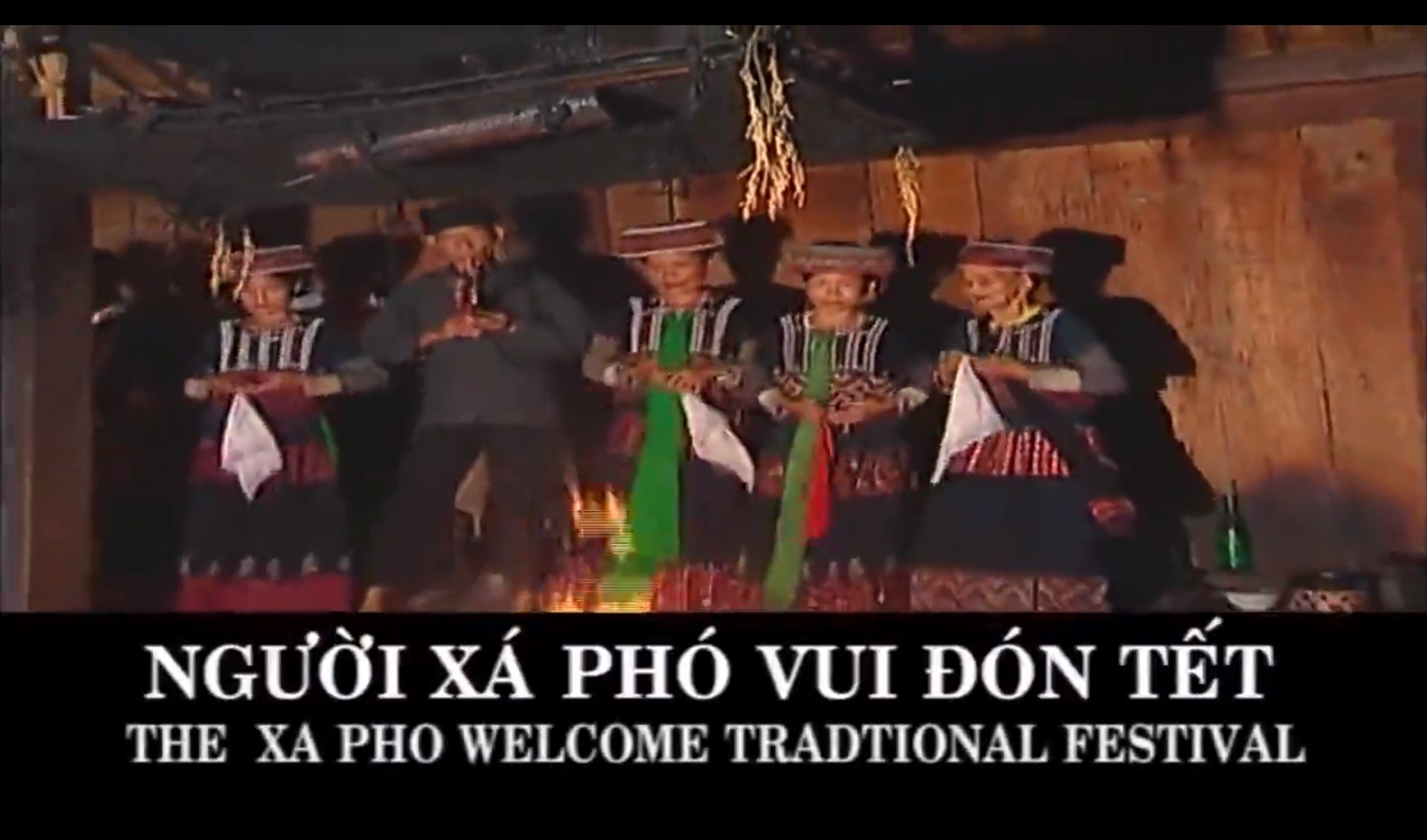

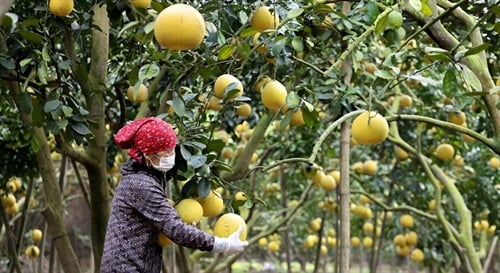

















































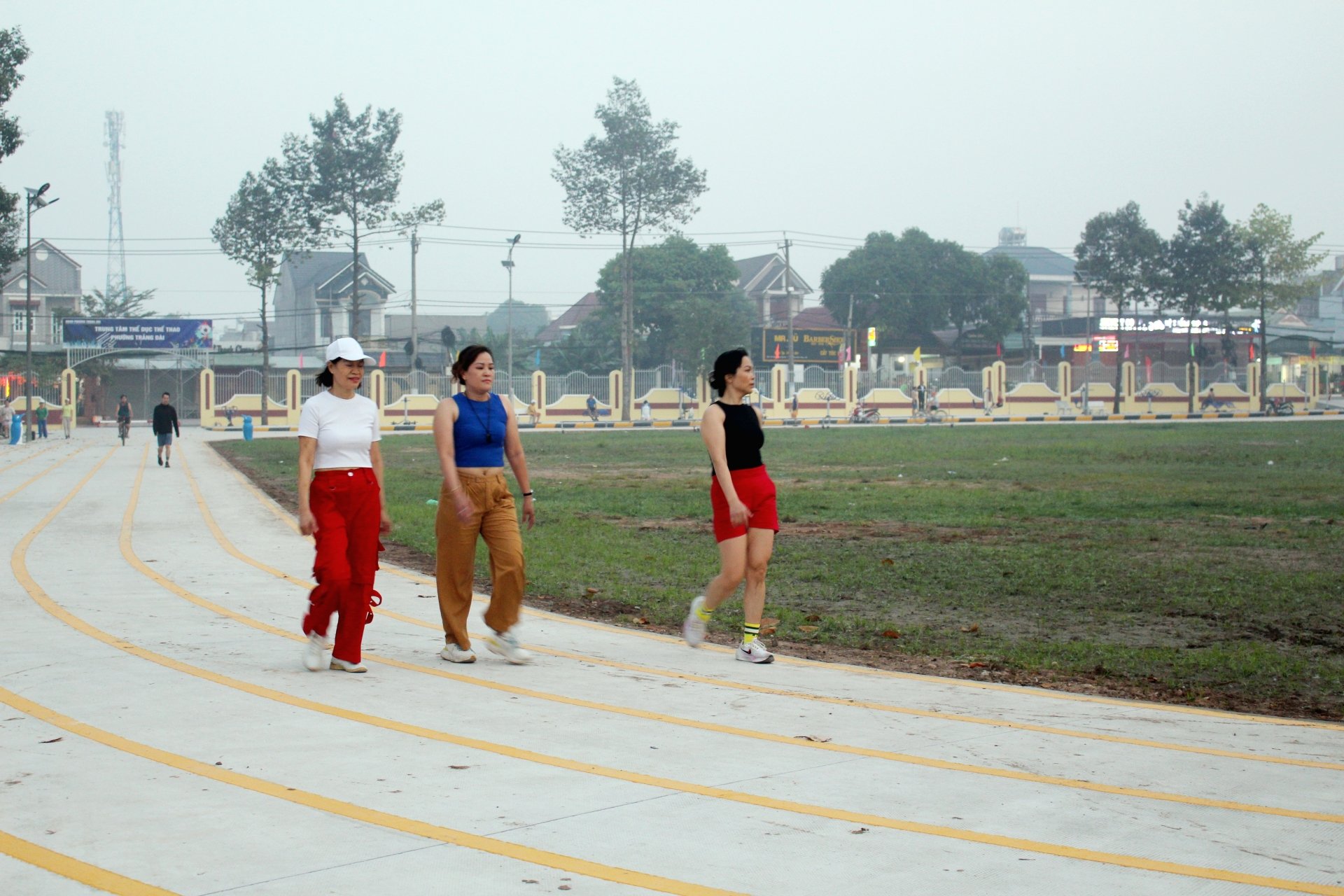









Comment (0)